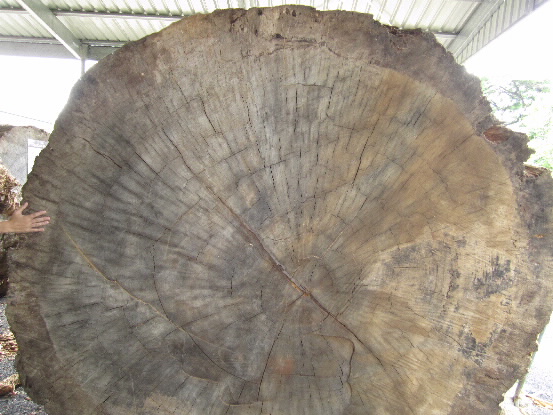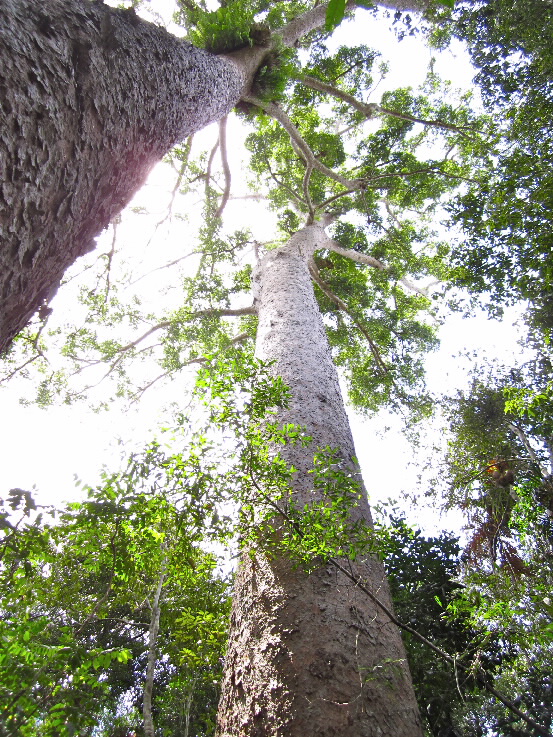Media Releases
Tree study may yield climate secrets
Tree study may yield climate secrets
First published 12 February, 2013

Tree rings may yield insights into the past 400 years of drought and flood in tropical parts of Queensland, and may help forecast future extreme weather events.
James Cook University's Dr Nathan English said that it had been believed that because of the rapid growth of trees in the tropics, their rings did not reveal reliable information.
But Dr English, from JCU’s Centre for Tropical Environmental and Sustainability Science, has been working on Forecasting the future of flood and drought in Australia using multi-century tree-ring and isotope chronologies from the tropics.
Tree-rings, also known as growth rings or annual rings, can be seen in a horizontal cross section cut through the trunk of a tree.
The rings result from the change in the tree’s speed of growth through the seasons of the year. Usually, one ring marks the passage of one year in the life of the tree. The rings are more visible in temperate zones, where the seasons differ more markedly.
Dr English said dendrochronology, or tree-ring science, was more difficult to study in the tropics.
“In the high latitudes, such as North America and Europe, most trees have tree-rings formed annually as a result of defined hot-cold seasons,” he said.
“Because trees generally grow year-round in the tropics and have more porous wood, tropical trees tend to have poorer ring structure or rings that aren't annual.
“And if the records aren't annual, they're much less useful for climate research: imagine trying to redo your taxes for the last five years if none of your receipts had the date on them.”
Dr English said that had been the unofficial scientific view for the last 100 years.
“Now we are having a second look at tropical trees for dendrochronology because we're finding more and more tree species with good, annual rings, which are formed during wet-dry seasons, and the tropics are an important part of the global climate system,” he said.
“Even without visible rings, the isotope chemistry in some trees wobbles on an annual cycle, allowing us to ‘see’ and measure the rings using instruments called isotope ratio mass spectrometers.
“This study in and around the Atherton Tablelands will be one study out of many occurring world-wide, including places such as Costa Rica, Ethiopia and Indonesia, that are trying to fill the ‘gap’ in our knowledge about tropical climate.
“As a bonus, I hope we'll learn something about the last 400 years or more of drought and flood history in Queensland and that in turn can guide us in the future.”

Insurance companies may be very interested the results, as will insurance consumers, he said.
“Droughts and floods are among Australia's most costly disasters. The 2002-03 drought is estimated to have cost Australia $7.4 billion. The Queensland and Victorian floods in 2011 cost over $2.5 billion. One of the proposed impacts of
climate change is increased climate variability and therefore more extreme events.
“Governments and businesses, including farmers, and insurers incur the brunt of economic damages of floods and drought.
“Being able to accurately forecast the frequency and intensity of climate extremes is a key part of assessing the cost-to-benefit ratio of any investment in mitigation efforts.
“Underestimating the frequency or intensity of floods and droughts can expose governments, businesses and insurers to billions of dollars in uncovered expenses, social costs or legal liability.”
Dr English said alternatively, preparing for disasters that don't occur incurred an opportunity cost; the money to mitigate a flood might have been spent on building schools, for example.
“There is a clear economic and social incentive to accurately forecast the future frequency and intensity of floods and droughts.
“To do this, a thorough understanding of the climate system that leads to extreme climate events is required.
“Our work is designed to produce better, longer proxy-records of rainfall and climate variability.”
JCU Media contact: Caroline Kaurila (07) 4781 4586 or 0437 028 175